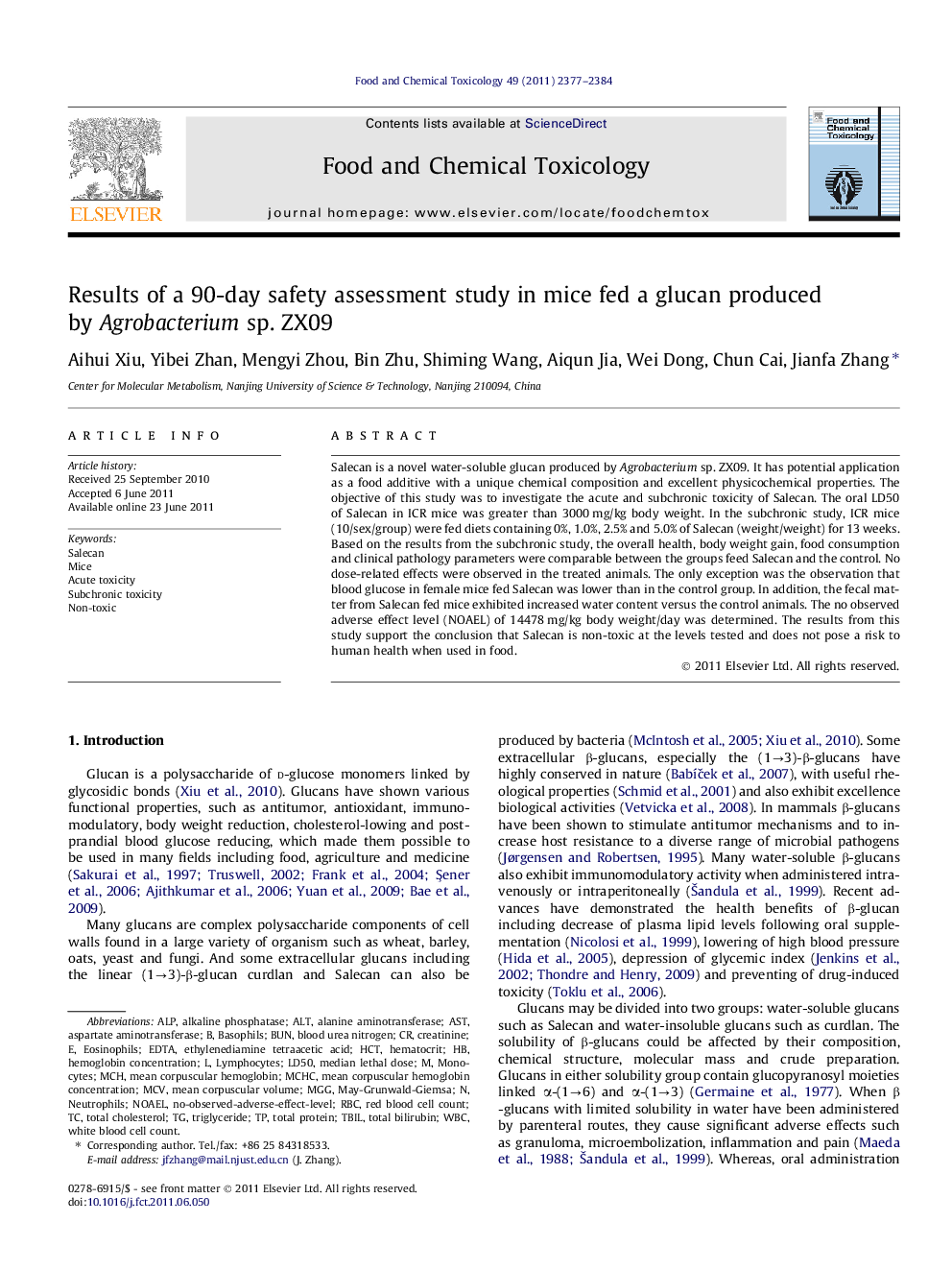| کد مقاله | کد نشریه | سال انتشار | مقاله انگلیسی | نسخه تمام متن |
|---|---|---|---|---|
| 5853162 | 1130856 | 2011 | 8 صفحه PDF | دانلود رایگان |

Salecan is a novel water-soluble glucan produced by Agrobacterium sp. ZX09. It has potential application as a food additive with a unique chemical composition and excellent physicochemical properties. The objective of this study was to investigate the acute and subchronic toxicity of Salecan. The oral LD50 of Salecan in ICR mice was greater than 3000Â mg/kg body weight. In the subchronic study, ICR mice (10/sex/group) were fed diets containing 0%, 1.0%, 2.5% and 5.0% of Salecan (weight/weight) for 13Â weeks. Based on the results from the subchronic study, the overall health, body weight gain, food consumption and clinical pathology parameters were comparable between the groups feed Salecan and the control. No dose-related effects were observed in the treated animals. The only exception was the observation that blood glucose in female mice fed Salecan was lower than in the control group. In addition, the fecal matter from Salecan fed mice exhibited increased water content versus the control animals. The no observed adverse effect level (NOAEL) of 14478Â mg/kg body weight/day was determined. The results from this study support the conclusion that Salecan is non-toxic at the levels tested and does not pose a risk to human health when used in food.
⺠Acute and subchronic toxicity of Salecan was investigated. ⺠The oral LD50 of Salecan in mice was determined in acute toxicity study. ⺠The fecal matter from Salecan-fed mice in 90-day study exhibited increased water content versus the control animals. ⺠Salecan is non-toxic at the levels tested and does not pose a risk to human health when used in food.
Journal: Food and Chemical Toxicology - Volume 49, Issue 9, September 2011, Pages 2377-2384